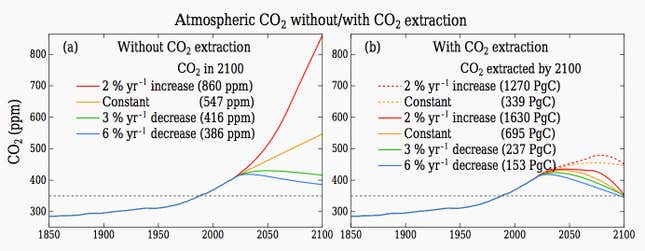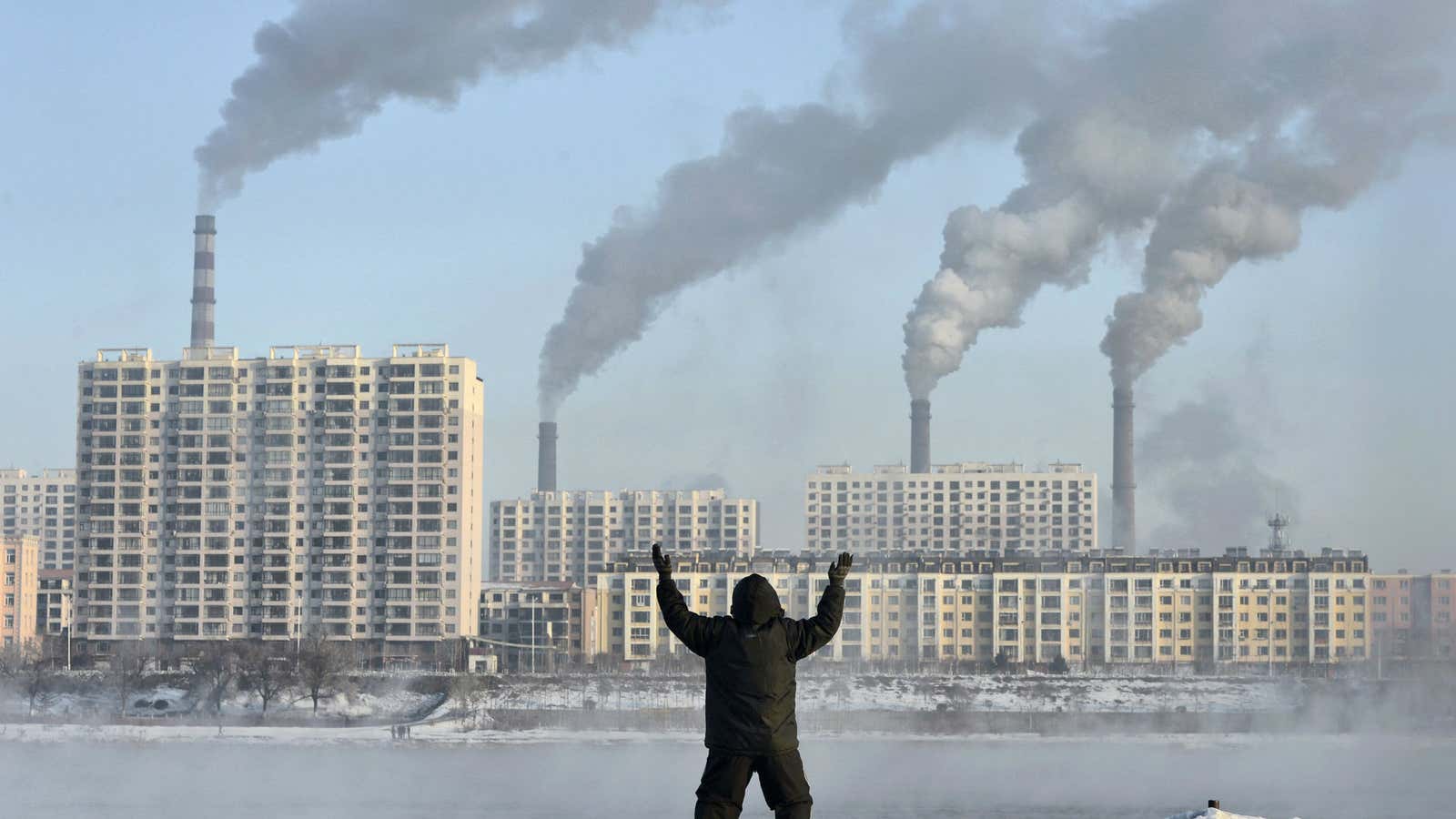The world has been slow to realize the immense financial and human costs of climate change. Would that change if we realized just how much worse it could get?
That’s the hope of new research led by James Hansen, a Columbia University professor and former head of NASA’s Goddard Institute for Space Studies. Hansen’s research estimates that if the world were to delay reducing carbon emissions until a later date, it could cost as much as $6.7 trillion per year for at least 80 years after that date to reign in the effect of those emissions on the climate.
For comparison, all the countries in the world combined spend about $2 trillion annually on defense. That fact makes “the war on climate change” an apt metaphor.
To reach that number, Hansen and his fellow scientists looked at the amount of carbon dioxide in the atmosphere currently. Carbon-dioxide levels have increased from 280 parts per million (ppm) before the industrial revolution to about 400 ppm today, largely as a result of our increased use of fossil fuels. Next, they assessed what would be needed to bring it down to 350ppm, which is considered a relatively safe amount of CO2 in the atmosphere.

As the chart above shows, if we were to do nothing to decrease our emissions right now, by 2100 our atmosphere would have more than 500 ppm CO2. The predictions for what the world would look like then are dystopian. Sea levels may rise by many meters, the Greenland ice sheet would have completely melted, and life in the tropics would be almost impossible.
Even if we began to decrease our emissions by as much as 6% per year—an ambitious but possible target to try to hit goals set out in the Paris Agreement—the world would still not reach the safe CO2 level of 350ppm. We’ve simply put too much CO2 into the atmosphere.
That is why Hansen and his colleagues conclude that we will have to use technologies to remove carbon dioxide from the air. Some of these “negative emissions” technologies exist, but they remain expensive. The cost of using them stands between $100 and $300 for each metric ton of carbon dioxide removed. (Some experts think that technology development might make it cheaper to capture carbon dioxide, but even then the costs are unlikely to fall below $30 per metric ton.)
Multiplying that number range with various emission reduction scenarios gives us the cost of climate-change mitigation. At the lower end, where we reduce emissions by 6% per year, we will need to spend about $18 trillion over 80 years to remove CO2 and bring levels down to 280 ppm. (That doesn’t include the cost of technologies we will need to deploy to reduce emitting carbon dioxide, such as replacing coal power plants with wind and solar power.) At the higher end, where we initially continue to increase emissions by 2% per year, we would need to spend about $535 trillion over 80 years to reach the same goal.
“If large fossil fuel emissions are allowed to continue, the scale and cost of industrial CO2 extraction, occurring in conjunction with a deteriorating climate and costly dislocations, may become unmanageable,” Hansen and his co-authors write. “Simply put, the burden placed on young people and future generations may become too heavy to bear.”
